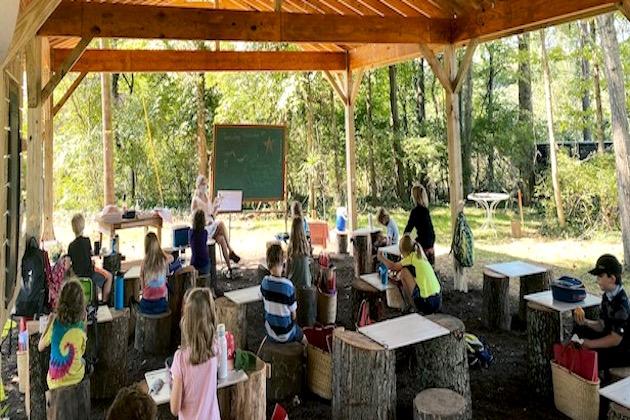Move FM Global News

After volcano eruption, Philippines students scurrying to classrooms
Jun 21, 2023MALILIPOT, Philippines: The eruption of the Mayon volcano in the northeastern Albay province of the Philippines has forced nearly 20,000 people to flee their homes and seek shelter in schools, causing disruptions to education for thousands of students.
Many of these students are now attending classes in chapels, tents, or even under trees, as officials warn that the volcanic activity could continue for months, leading to an ongoing humanitarian crisis.
Most of the evacuees come from farming villages located within a 6-kilometer radius of the volcano’s crater, an area designated as a permanent danger zone. These villages have been thriving communities for generations, but the volcanic eruption has rendered them uninhabitable.
Over 20 emergency shelters, primarily grade and high school campuses, have been set up to accommodate the displaced individuals. However, these spaces are now overcrowded, with multiple families sharing a single classroom. Essential items, such as sleeping mats, clothes, cooking stoves, and toys for children, are scattered throughout these makeshift shelters.
In five Albay towns, more than 17,000 students have been affected by the displacement caused by the eruption. Approximately 80 percent of these students are continuing their education through an emergency system in which parents teach their children at home using learning modules provided by the schools. This distance-learning approach was widely adopted during the COVID-19 pandemic when strict quarantine measures confined people to their homes.
While some teachers are conducting in-person classes in alternative locations, such as village halls, chapels, gymnasiums, and daycare centers, others are improvising by holding classes in outdoor spaces, including gardens and under trees. Their determination to ensure the continuity of education is evident, despite the challenging circumstances.
Philippine President Ferdinand Marcos Jr. recently visited Albay to offer reassurance to the displaced villagers and distribute food supplies. He held discussions with the provincial governor and town mayors regarding the impact of the eruption on the affected individuals, especially schoolchildren and the local economy.
The volcanic eruption is the latest test for the Marcos administration, which has been dealing with various natural disasters since assuming office. The Philippines is prone to typhoons, storms, earthquakes, and volcanic activity.
The volcanic conditions are expected to persist for up to three months, according to President Marcos, who advised the evacuees to be prepared for a prolonged displacement.
Some of the displaced villagers have expressed concerns about the heat and overcrowding in the emergency shelters. Local officials have promised to address these issues by providing more electric fans and improving overall conditions.
Mayon, with its picturesque conical shape, is a popular tourist attraction in the Philippines. However, it is also the most active volcano among the country’s 24 known volcanoes. In 2018, a violent eruption displaced tens of thousands of people, while an eruption in 1814 claimed the lives of over 1,000 individuals and buried entire villages.


